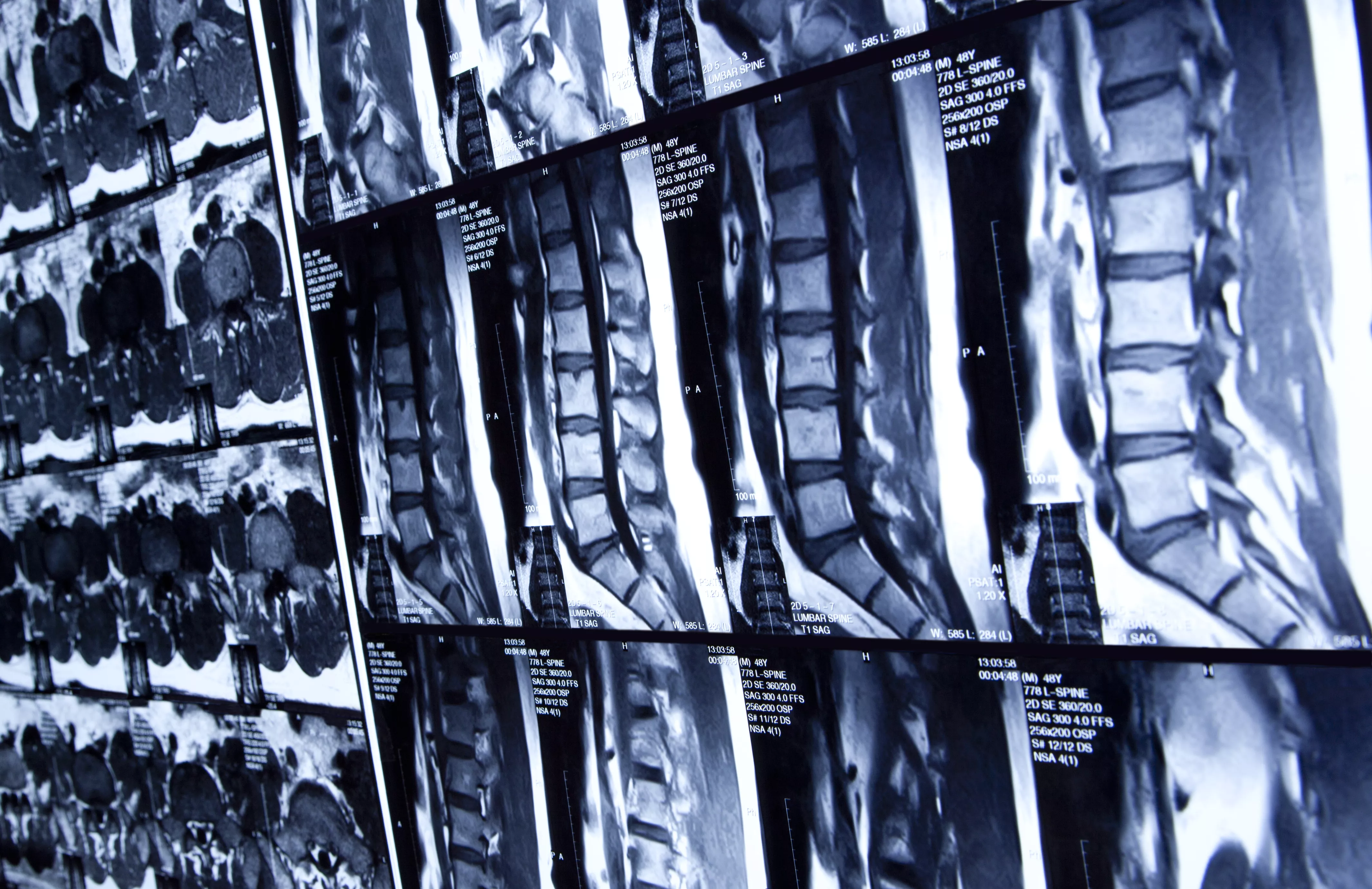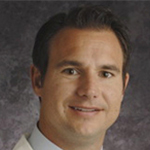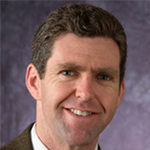
Mike Upton, 75, is an avid spinner. It was during a class he noticed numbness in his left leg. “I felt like my leg was going to give out when getting on my bike,” Mike said. He would occasionally have this sensation for nearly a year before it got progressively worse. He began experiencing balance issues and muscle weakness in his thigh. “I lacked strength in my leg to go up and down stairs and I became increasingly worried about this.”
Concerned these were symptoms of complication from a previous hip replacement, Mike saw his hip surgeon who referred him for an MRI scan of his lower back. The results were negative. Still concerned, Mike went to his primary care doctor who suggested spinal steroid injections. The injections did not help and Mike continued to experience numbness. His doctor then referred him to Alessandro Speciale, MD, an orthopedic surgeon specializing in the spine and spine disorders at Anne Arundel Medical Center (AAMC).
Dr. Speciale ordered an MRI of Mike’s neck and thoracic spine, the longest region of the spine running from the base of the neck down to the abdomen. The images showed that Mike had a dangerous herniated disk in the middle of his back.
Working as a team
“We describe to patients that spinal disks look like jelly doughnuts and, when a disk herniates, it’s like the jelly squirting out of the doughnut and hitting a nerve,” Dr. Speciale explained. “By the time of Mike’s surgery, the herniated disk had become calcified. So, in this case, you had what looked like a piece of bone poking into the spinal canal, blocking spinal fluid from getting through. This was damaging Mike’s spinal cord.”
Mike’s surgery would be high risk, with a 75 percent likelihood of success. Dr. Speciale knew he had to bring together a multidisciplinary team. He requested the help of AAMC Thoracic Surgeon Stephen Cattaneo, MD, and Neurosurgeon Timothy Burke.
“This case was special in its complexity and inherent risk of paralysis or worsening of other neurologic symptoms,” explained Dr. Cattaneo. “Dr. Speciale was very concerned that removing the disk could compromise the spinal cord, so he involved Dr. Burke and me for expertise in our respective areas.”
Each doctor sat down with Mike and explained what their roles would be during the surgery. “My wife and I felt confident with what they told us and how they explained the procedure step by step, so we decided to get it done,” Mike said.
Just two weeks after his diagnosis, Mike was in the operating room. Looking back, he describes the ordeal as a flash. “I went from being a candidate that didn’t require surgery to needing to get in there quickly,” he said. “I was very impressed with the speed at which all the doctors saw me and the time each took to walk me through the procedure and their respective roles…this was all very impressive.”
Preventing paralysis
Mike’s surgery took nearly 10 hours. When waking up in intensive care, Mike said the first thought that crossed his mind was his ability to move. “I wiggled my toes first and made sure my legs could move,” he said. Once he came into consciousness, Dr. Speciale, Dr. Cattaneo and Dr. Burke each congratulated him on a successful surgery. The doctors explained to Mike they had removed part of his rib to turn it in to a substitute disk out of his own bone. They explained that there was no damage to the spinal cord.
“This was a really rare disk herniation and probably one of the highest-risk procedures,” said Dr. Burke. “Dr. Speciale, Dr. Cattaneo and I worked side by side to remove bone from the spinal cord without damaging it. The procedure goes to show the importance of teamwork to do cases like these successfully. At AAMC, we have a unique advantage of having great teams available for our patients.”
READ MORE: 5 tips to prepare for home life after joint replacement or spine surgery
Regaining strength
After his surgery on Monday, Mike was discharged from the hospital Friday afternoon. He walked out with the help of a cane. From the very beginning, he noticed renewed strength and balance. To further improve, he completed six weeks of physical therapy. Now, he is slowly getting back into his spinning routine. “I know this could have been more serious, so I’m very grateful to the doctors and the team at AAMC,” Mike said.

Alessandro Speciale, MD, is an orthopedic surgeon specializing in the spine and spine disorders at Anne Arundel Medical Center (AAMC).

Stephen Cattaneo, MD, is a thoracic surgeon and medical director of Thoracic Oncology at AAMC.

Timothy Burke, MD, is a neurosurgeon at AAMC.



